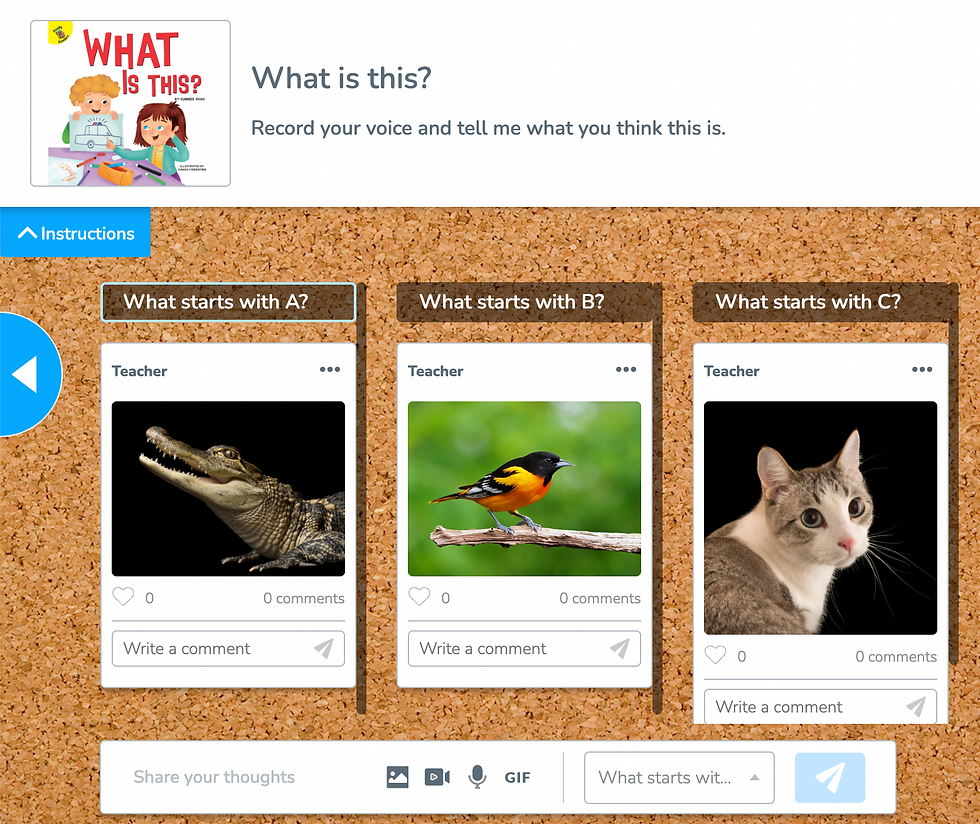
What is Nearpod EL?
Nearpod EL is an educational technology platform that helps teachers engage and educate students through interactive lessons and activities. As part of my work, I coach instructional staff on how to best use Nearpod EL to get the most out of its features. Since Nearpod EL contains many lessons and activities that educators can use to help different levels of students develop language skills, I'll focus my attention today on beginning learners.
Three Ways to Use Nearpod EL to Support Language Acquisition
1. Multimedia resources
One of the ways that Nearpod EL supports language acquisition for beginners is through its use of multimedia resources, such as videos, images, and audio recordings. As you personalize the activities, you can provide students with authentic language exposure and help them build their listening and comprehension skills. Use the Open Ended Question daily, for example, to ask students to recite phrases like A is for Apple, B is for Ball. In this example, I'm personalizing the question by adding the student's friend, Andrea, to make it more interesting. Now they know that Andrea starts with A.

Over time, gradually introduce new letters and new sounds (for example, A is for apple and are). Allow the child time to think about why these sounds are different. You can also let them choose to practice phrases or sentences that they think are silly or humorous. P is for Polly want a cracker, or P is for Peter Piper picked a peck of pickled peppers are both fun sayings. Whatever sentence you choose, make it fun, make it relevant, and make it personal. Take it a step further by adding an activity in Seesaw, Flip or Google Forms, where they can record (and listen) to their fluency over time.
2. Collaborative Activities
Another way that Nearpod EL supports language acquisition is through its use of collaborative activities. These activities encourage students to communicate with each other and practice using the target language in a social context. This interaction helps students develop speaking and conversation skills and helps them feel more confident using the language. One collaborative feature in Nearpod EL you can use is the Collaborate Board. Again, focus on the audio record feature (make sure you have the Immersive Reader turned on), and have students record their voices as they "tell you" what they see. You can pair students of different levels together and ask them to record together. While one child may know the what (I see an alligator), the other child can add descriptors (It is green). "We see a green alligator!"

3. Focus on Individual Needs
A third way to use Nearpod EL with beginners is to focus on individual needs. Nearpod EL has a collection of lessons focused on Letters and Sight Words. Simply search those key terms in the Nearpod EL search box. And while content lessons can be quickly prepared and edited for the class, when you have a few students who need more individualized support, you can:
Mix up the lesson activities to provide more differentiation
Provide students different lessons about the same content (for example, you may want to shorten the lesson or add additional support)
Send Nearpod codes home with students in student paced mode for additional practice (e.g. lessons on letter or sight words)
Nearpod EL provides teachers with the tools they need to differentiate instruction and meet the needs of their diverse learners. Being creative with the features while taking advantage of the huge library of content means working smarter, not harder! This personalized approach helps students make progress at their own pace (or together) and provides them with the support they need to succeed. Nearpod EL is a valuable resource for educators looking to support language acquisition in their classrooms.
Visit Nearpod.com to learn more.
Let us know in the comments how YOU plan on using the features to help your students!
At LogicWing, we have worked with many school districts to provide migrations, consulting, and training, but we also love being able to provide educators with specific ways to provide differentiated and engaging learning in the classroom. When we work with you, we see your school district as a whole and want to meet individual teacher's needs.
Schedule a free consultation call with us to learn how we can help your school find solutions to ongoing problems while keeping teachers happy and students engaged.
